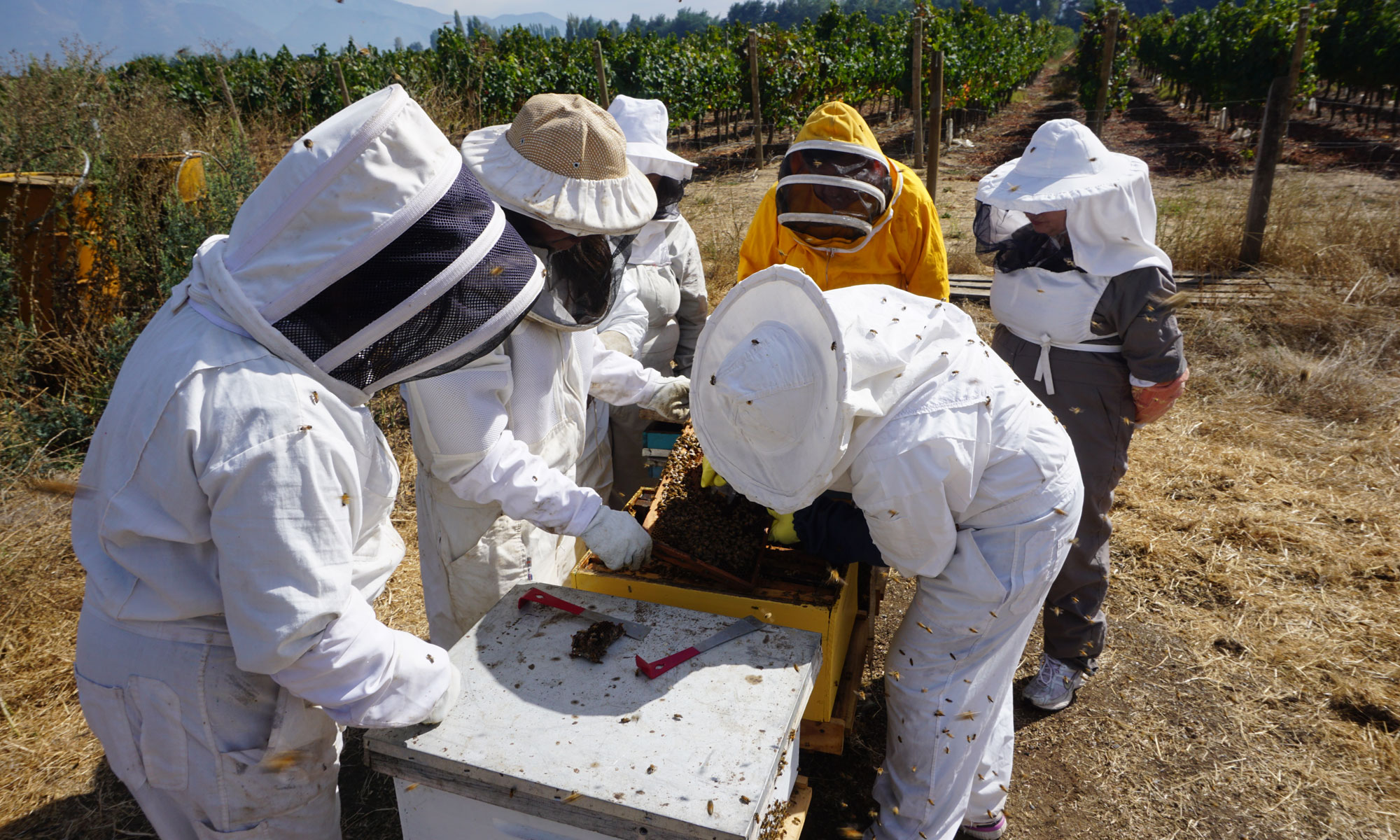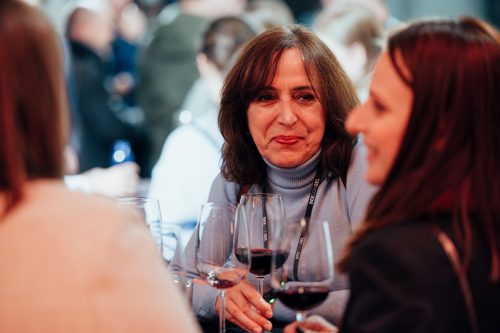The INSIGNIA-EU poster presented at the European Citizen Science Conference in Vienna, Austria (also for download)
The poster for download: GratzerBrodschneiderINSIGNIAEU_PosterECSK2024
Kristina Gratzer

PREPARATORY ACTION FOR MONITORING OF ENVIRONMENTAL POLLUTION USING HONEY BEES
The INSIGNIA-EU poster presented at the European Citizen Science Conference in Vienna, Austria (also for download)
The poster for download: GratzerBrodschneiderINSIGNIAEU_PosterECSK2024
Kristina Gratzer
“Let’s celebrate Citizen Science together at the 5th conference of the European Citizen Science Association (ECSA) and the 9th Austrian Citizen Science Conference.” – Yes we did!
ECSA, together with the Natural History Museum Vienna, Boku University and Österreich forscht, organised this event from April 3rd to 6th 2024 in Vienna, Austria. Among the 500 participants, Robert Brodschneider and Kristina Gratzer from the University of Graz were included.
The conference was packed with interesting presentations and workshops on a wide range of citizen science projects and relevant topics. On the first conference day, Kristina Gratzer represented the INSIGNIA-EU consortium with a poster. The special thing about the poster session was that each presenter was provided with a bottle of wine and offered a glass to anyone interested while talking about the poster. We would love to see this approach at other conferences as well. On Friday, the 5th, Robert Brodschneider held a talk about Beekeeper participation in environmental monitoring in Europe in front of ca 50 people, followed by an intense talk about beekeeper citizen scientists.
INSIGNIA-EU Poster with bee hives in the background
Continue reading “April in Vienna: European Citizen Science Conference”
Today was the last online Plenary Meeting for the core INSIGNIA-EU consortium before we meet in person in just over two weeks in Bragança, Portugal, courtesy of Alice Pinto and her colleagues at the Instituto Politécnico de Bragança. The laboratories in Greece, the Netherlands, Portugal and Spain have been working flat out over the winter to analyse the thousands of samples collected by the citizen scientist beekeepers in all 27 EU countries during the 2023 beekeeping season. Results of many of the matrices are now complete, and have been handed over to the consortium’s statisticians and modellers for further analysis. The group were here looking at some of the results for pollen composition, which show the proportion of different pollen types over the season in different apiaries, but they would not look out of place on the walls of an art gallery! In the near future some of the results will be passed to the National Coordinators in each country for distribution to the individual beekeepers. The aim of the Bragança meeting will be to review all of the results of the project ahead of a meeting with the European Commission in Brussels in April.
Poland joined the INSIGNIA-EU project with 20 citizen-scientist beekeepers, of which as many as five were ladies, which, project-wise, was a rarity.
Each of them is of course a beekeeper, but other than that they also have other cool jobs and interests.
The national coordinator for Poland, as well as a citizen scientist, was Dr Anna Gajda. On a daily basis she is a head of the Laboratory of Bee Diseases at the Institute of Veterinary Medicine, Warsaw University of Life Sciences in Warsaw. She runs a diagnostic lab, both for beekeepers and their sick colonies, and for science, researching long standing and emerging pathogens in both managed and wild bees. She does a lot of extension work for beekeepers and veterinarians, giving talks and practical courses on bee disease control and prevention. In her free time she enjoys photography, travel and birdwatching.
DVM Ewa Mazur is a young scientist. She works as an assistant in the Laboratory of Bee Diseases at Warsaw University of Life Sciences. Her main research topic is the problem of winter bee colony losses in Poland. She also works as an advisor for beekeepers, as she has veterinary specialization in bee diseases. Bees are her great passion – she takes care of a small apiary and loves to observe wild bees. In her free time, Ewa practices yoga and cooks vegetarian dishes. Continue reading “Meet the Queens of INSIGNIA-EU from Poland”

When we spot somebody having birthday in our consortium, we celebrate for sure.
We all congratulate Alice Pinto with her birthday today (16-12-2023).
Why not ask Bing’s AI. “Who is Alice Pinto”, and here it comes.
“M. Alice Pinto is a professor and a researcher from Portugal who specializes in honeybee genetics and conservation. She works at the Polytechnic Institute of Bragança and the Mountain Research Centre. She has published many papers and books on topics such as honeybee diversity, evolution, molecular research, and environmental monitoring. She is also involved in several national and international projects related to honeybee health and sustainability.”
As Alice did reply, “no reason to worry about AI, since I have done far more work in my life!”. Conclusion: AI still not an intellectual threat!
Alice with her team is an important and hardworking partner of INSIGNIA, doing the metabarcoding on all our pollen samples. A new way for pollen recognition and will become the way for pollen analysis in the future. It is still a long journey and big workload doing this and the databases are still not perfect, but after INSIGNIA a major step up is done.
Flemming Vejsnæs
Pictures are from the BeeConSel meeting in Ljubljana recently, where Alice was in the advisory board of the project.

Get the latest wrap-up on the INSIGNIA-EU. We answer the question – HOW FAR IS THE PROJEKT AT THE MOMENT. Enjoy.
Pesticides residues in honey
Josef van der Steen
September 2023
Summary
Pesticides can be detected in honey. There is nothing that a beekeeper can do about it, because pesticides are in the environment and bees collect these pesticide residues along with their food. Based on the recent EFSA report on pesticides in food, the most detected pesticides in honey are the agricultural pesticides thiacloprid, acetamiprid, bimoxystrobin, glyphosate, chlorpyriphos, fosetyl, flonicamid, boscalid, and chlorfluazuron. The varroa control substances amitraz and coumaphos were also detected. In about 4 out of 5 honey samples no pesticides were found in quantifiable amounts, and in 1 out of 5 honeys pesticides could be detected. Only in a few cases did the amount of pesticides exceed the MRL (Maximum Residue Level) threshold, but in all cases, the honey samples analysed met the food safety / trade threshold. How pesticides enter the hive, how the honey bee colony cleans the honey, and how pesticides in honey may relate to honey consumption and toxic effects, is described in this newsletter. Continue reading “PESTICIDES RESIDUES IN HONEY – CORRECTED VERSION OF NEWSLETTER OF THE 31TH SEPTEMEMBER”
Sissel Goodgame is the worlds northernmost beekeeper. More then 2000 km north of Oslo, Norway. We found it so exciting to have her on the team, since she is so far away for everything – read “pollution”. On the annual Vossa møtet 2 hours from Bergen, Sissel made a great talk about her participation in the INSIGNIA project. INSIGNIA would not survive without our beekeepers or Citizens Scientist as we call them. They are all volunteers. We handed over our honor certificate for being an important part of INSIGNIA. “Sissel thanks a lot”. Hope there will be a next time and hope to have you on the team.
Within the INSIGNIA project we did sample pollen samples from our test colonies every second week from the 20.-23. April to the end of the project 24.-27. august. Every second week the Citizens Scientist went out an activated the pollen trap on the evening before and then did empty the trap next days evening. There was always an eye on the weather forecast. Should we move the collection with one or 2 days. The main part of the samplings were done over one day, few times 2 days.
Continue reading “The diversity of the pollen image of a bee colony”